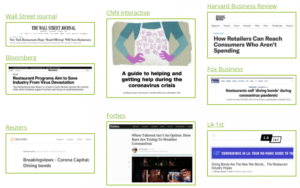 Bernetta writes:
Bernetta writes:
I’m old and new in the business. That is, I was in the business for a long time and have been away from PR for more than seven years. I believe folks are emailing press releases today rather than snail-mailing them. Is that correct? And if I don’t have the budget to use your service, what is the best way to get my press release out?
Mickie responds:
The best way to distribute a press release is to take your newsworthy announcement and put it in the hands of the five or six key media who cover your industry. That isn’t easy for most people. It involves research, not to mention gaining physical access to these journalists without incurring a restraining order or backlash. That’s why people turn to PR firms who pull out their personal media contacts and lean on these key media by phone, email, fax, and face-to-face meetings. You can do this as well. Target key media and develop relationships with them so that when you have a newsworthy announcement, they will listen to your pitch. You can also try local media who cover your industry. These are easy relationships to build. They cost nothing more than time.
Another method that even the best PR firms use is the newswire. A press release newswire, like industry leader PR Newswire, offers a cost-efficient way of blasting your press release to newsrooms and media nationwide. There is a lot of competition on the newswire but it remains a quick, easy way to get media pickup from journalists with whom you have no relationship, as well as exposure to online databases, blogs, rss feeds, etc. The downside is that a true Tier-1 newswire distribution costs serious money.
There are lesser “newswires” but most lack the infrastructure of newswire feeds in newsrooms across the country, relying on an Internet presence and/or piggybacking other news services. They cost less, but they are removed from the daily routines of journalists, who routinely check one to two Tier-1 newswires at most. It’s no secret journalists are overworked and underpaid. Could they visit dozens of websites and pull content from dozens of different sources? Sure. But real world experience says otherwise.
Email. Yeah, email works but here’s the rub: spam and whitelisting influences whether your press release will ever get read. If the press release service claims an email database of hundreds of thousands of media, it’s safe to assume these journalists have no relationship to this company. For example, eReleases, which pioneered email distribution of press releases to subscribing journalists 11 years, has a database of approximately 40,000. If you decide to email your press release yourself, you need to do it as targeted and personal as possible so it doesn’t appear as a bulk piece of impersonal email. Ideally, it would be great if you researched each journalist. Try writing them as follows:
Bob,
I just read your article, “ABC Corp. Opens New Downtown Warehouse,” and felt you would be interested to know that we just expanded our headquarters and fulfillment center on the corner of Main Street and First Avenue. I have included a press release we will be issuing later this week and would welcome the opportunity to talk with you directly about our company’s expansion. In addition, I would also like to extend an invitation to tour our state-of-the-art facility at your convenience.
In conclusion, if you can afford a great PR firm, go for it. What they do cannot be easily replicated by any technology or website. At the heart of it, public relations is about relationships. Note that a newswire maintains an integral part of any press release campaign, including those handled by the best of PR firms. If you decide to email the press release yourself, remember to stick with quality-of-message over quantity of media outlets. Be personal and on task. A well-drafted email, or even a snail-mail letter, to six key journalists can result in much more media coverage than an impersonal email blasted to hundreds of thousands of journalists. In fact, the latter could result in angry journalists and ill-will towards your company.
This article is written by Mickie Kennedy, founder of eReleases (https://www.ereleases.com), the online leader in affordable press release distribution. To subscribe to PR Fuel, visit: https://www.ereleases.com/prfuel/subscribe/.
